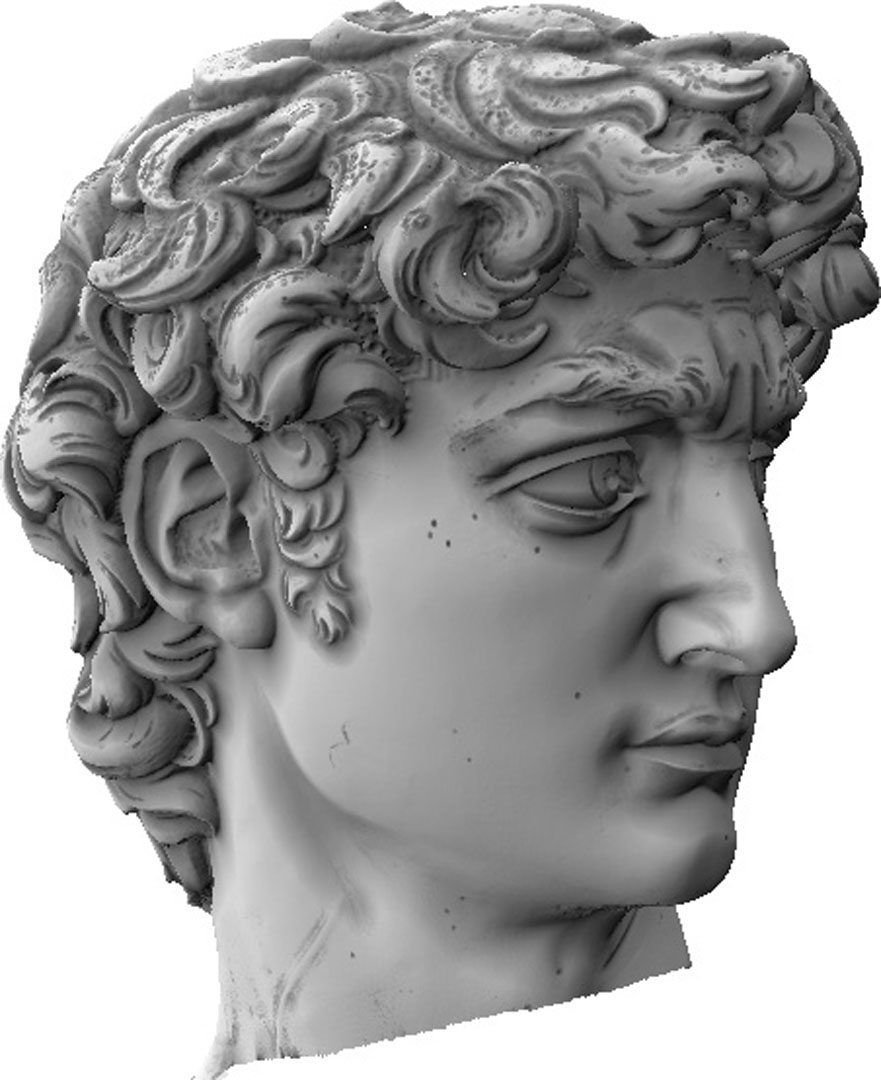“Exaggerated shading for depicting shape and detail” by Rusinkiewicz, Burns and DeCarlo
Conference:
Type(s):
Title:
- Exaggerated shading for depicting shape and detail
Presenter(s)/Author(s):
Abstract:
In fields ranging from technical illustration to mapmaking, artists have developed distinctive visual styles designed to convey both detail and overall shape as clearly as possible. We investigate a non-photorealistic shading model, inspired by techniques for carto-graphic terrain relief, based on dynamically adjusting the effective light position for different areas of the surface. It reveals detail regardless of surface orientation and, by operating at multiple scales, is designed to convey detail at all frequencies simultaneously.
References:
1. Agarwala, A., Dontcheva, M., Agrawala, M., Drucker, S., Colburn, A., Curless, B., Salesin, D., and Cohen, M. 2004. Interactive Digital Photomontage. ACM Trans. Graphics (Proc. SIGGRAPH), Vol. 23, No. 3. Google ScholarDigital Library
2. Akers, D., Losasso, F., Klingner, J., Agrawala, M., Rick, J., and Hanrahan, P. 2003. Conveying Shape and Features with Image-Based Relighting. In Proc. IEEE Visualization. Google ScholarDigital Library
3. Cignoni, P., Scopigno, R., and Tarini, M. 2005. A Simple Normal Enhancement Technique for Interactive Non-Photorealistic Renderings. Computers & Graphics, Vol. 29, No. 1. Google ScholarDigital Library
4. Cohen, J., Duncan, D., Snyder, D., Cooper, J., Kumar, S., Hahn, D., Chen, Y., Purnomo, B., and Graettinger, J. 2004. iClay: Digitizing Cuneiform. In Proc. Symposium on Virtual Reality, Archaeology, and Cultural Heritage (VAST). Google ScholarDigital Library
5. Decaudin, P. 1996. Cartoon-Looking Redering of 3D-Scenes. Tech. Rep. 2919, INRIA.Google Scholar
6. do Carmo, M. P. 1976. Differential Geometry of Curves and Surfaces. Prentice-Hall.Google Scholar
7. Golovinskiy, A., Matusik, W., Pfister, H., Rusinkiewicz, S., and Funkhouser, T. 2006. A Statistical Model for Synthesis of Detailed Facial Geometry. ACM Trans. Graphics (Proc. SIGGRAPH), Vol. 25, No. 3. Google ScholarDigital Library
8. Gooch, A., Gooch, B., Shirley, P., and Cohen, E. 1998. A Non-Photorealistic Lighting Model for Automatic Techical Illustration. In Proc. ACM SIGGRAPH. Google ScholarDigital Library
9. Gooch, B., Reinhard, E., and Gooch, A. 2004. Human Facial Illustrations: Creation and Psychophysical Evaluation. ACM Trans. Graphics, Vol. 23, No. 1, 27–44. Google ScholarDigital Library
10. Gumhold, S. 2002. Maximum Entropy Light Source Placement. In Proc. IEEE Visualization. Google ScholarDigital Library
11. Halle, M., and Meng, J. 2003. LightKit: A Lighting System for Effective Visualization. In Proc. IEEE Visualization. Google ScholarDigital Library
12. Horn, B. K. P. 1981. Hill Shading and the Reflectance Map. Proc. IEEE, Vol. 69, No. 1, 14–47.Google ScholarCross Ref
13. Imhof, E. 1982. Cartographic Relief Presentation. de Gruyter.Google Scholar
14. Kindlmann, G., Whitaker, R., Tasdizen, T., and Möller, T. 2003. Curvature-Based Transfer Functions for Direct Volume Rendering: Methods and Applications. In Proc. IEEE Visualization. Google ScholarDigital Library
15. Lee, C. H., Hao, X., and Varshney, A. 2006. Geometry-Dependent Lighting. IEEE Trans. Visualization and Computer Graphics, Vol. 12, No. 2. Google ScholarDigital Library
16. Li, Y., Sharan, L., and Adelson, E. H. 2005. Compressing and Companding High Dynamic Range Images with Subband Architectures. ACM Trans. Graphics (Proc. SIGGRAPH), Vol. 24, No. 3. Google ScholarDigital Library
17. Meyer, M., Desbrun, M., Schröder, P., and Barr, A. H. 2002. Discrete Differential-Geometry Operators for Triangulated 2-Manifolds. In Proc. VisMath.Google Scholar
18. Miller, G. 1994. Efficient Algorithms for Local and Global Accessibility Shading. In Proc. SIGGRAPH. Google ScholarDigital Library
19. Ostrovsky, Y., Cavanagh, P., and Sinha, P. 2005. Perceiving Illumination Inconsistencies in Scenes. Perception, Vol. 34, 1301–1314.Google ScholarCross Ref
20. Patterson, T. Shaded Relief: Ideas and Techniques about Relief Presentation on Maps. http://www.shadedrelief.com/.Google Scholar
21. Shacked, R., and Lischinski, D. 2001. Automatic Lighting Design using a Perceptual Quality Metric. In Proc. Eurographics.Google Scholar
22. Su, S., Durand, F., and Agrawala, M. 2005. De-Emphasis of Distracting Image Regions using Texture Power Maps. In Proc. Workshop on Texture Analysis and Synthesis.Google Scholar
23. Zhukov, S., Iones, A., and Kronin, G. 1998. An Ambient Light Illumination Model. In Proc. Eurographics Rendering Workshop.Google Scholar




